The word stroke sends shivers down the spine of many folks due to fact that they had had an episode before or had witnessed a relative get the brunt of stroke. To others, stroke is a curse nature serves karma for bad deeds in the past. Many of us growing up saw stroke-like events in local movies, in which a man stepped on a powder sprinkled on the floor in front of his room a night before by a colleague he is at loggerheads with; then he falls to the ground after stepping in it to go out in the morning and cannot move one side of the body again. That looks like a stroke. So that is the image and impression we have about stroke in our minds.
What the movie was unable to ascertain is that, these people probably had underlying health conditions unknown to them triggering their strokes. We hear stroke day in day out, by far it is very common, it is invariably 100% preventable. Stroke is one of the most dreadful acquired disease. It has destroyed homes, left people unemployed, previously independent active individuals becoming wholly dependent on relatives and neighbors.
Just like heart attack that occurs suddenly due to lack of blood supply to the heart and therefore causes death of the heart cells, strokes, sometimes known as brain attacks because they usually happen unexpectedly and caused by a blockage of blood flow to the brain or bleeding into the brain, causing brains cells (neuron) to die. Think of stroke this way; that water supply to a city is cut when the pipelines running into homes and industries get blocked or burst. This may lead to draught and subsequent loss of lives isn’t it?
In the same vein, if the blood pipelines (blood vessels) to the brain (the city) is blocked or burst, the brain will be starved of blood together with its constituents like oxygen, nutrients and brain cells will die. The brain architecture can be likened to a city with many industries companies and other institutions with specific mandates, goals and functions. The brain has parts that control our speech, sight, hearing, swallowing, coughing, urination, and movement. Depending on part of the city (the brain) that has its pipeline is affected some of the above activities or all will be affected manifesting as stroke.
Who is at risk of stroke?
A myriad of causes and risk factors of stroke exist. While inherited factors have a part in stroke risk, there are several things you may increase your risk. There are risk factors even if present can be controlled (modifiable risk factors) through lifestyle changes and others that cannot be controlled (non- modifiable). Knowing these risk factors and modifying them where applicable, can help reduce your chances of getting stank by stroke.
The non-modifiable risk factors include: male gender, advanced age, black race, and previous history of stroke and 1st degree familial history of stroke. The modifiable ones includes: poorly controlled hypertension, poorly controlled diabetes, high cholesterol levels, smoking, alcohol, cocaine use, sedentary lifestyle, obesity, indiscriminate use of sex enhancing drugs and sickle cell disease.
A middle aged woman was brought to the hospital motionless and could not move the right part of her body. She came in with blood pressure (BP) off the roof and blood sugar levels also dangerously high. Guess what she was hypertensive and diabetic unknowingly. This is because she never had a regular checks of BP and blood sugar levels. She had 2 of the above mentioned risk factors. The morale of this story is that some of these risk factors may never have symptoms at all. So my best guess is that check the BP yourself to self-monitor it. It is your health not your health provider’s, so take charge of it.
In Ghana, hypertension and diabetes top the chart for risk factors associated with stroke. Checking your BP and early morning blood sugar before meals at least 3 times a week is just fine. In a week, I together with my hardworking colleagues treated not less than 10 stroke cases on 2 accident and emergency duty days in one of the reputable health institutions in Ghana. Guess what all had either hypertension, diabetes or both. At a point I felt like a fraud, leisurely diagnosing hypertension and diabetes; but that is the sad reality. Diabetes and hypertension is that common. Get tested 3 times a week and keep track of BP and sugar levels in a book.
Authorities recommend that you get personal BP and blood sugar checking machines yourself. I know these equipment are costly to acquire, but trust me, managing stroke is much more financially draining, than getting the equipment.
How to prevent stroke
Stroke is preventable. Manipulation of the modifiable risk factors is the goal to stroke prevention. Quit smoking, reduce alcohol intake, check and chart in a book your BP and blood sugar level in the morning before meals at least 3 times a week (send this to the hospital on review visits). Attend regular and scheduled reviews if you are hypertensive, diabetic and or have high cholesterol disorders. Shun cocaine use. Religiously take drugs to keep the hypertension and diabetes well controlled. Exercise for 30mins for at least 3days in a week.
Thanks for reading. Do something remarkable today, people will emulate you.




